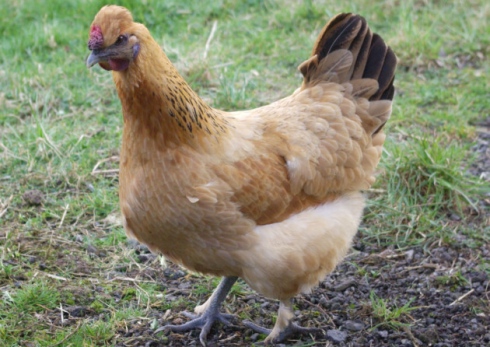

Many poultry farmers are now crossing indigenous chickens with commercial hybrid birds (broilers and layers) to produce the so-called ‘improved indigenous chickens’. It is a desperate breeding practice aimed at producing birds that have rapid growth rates, high egg production and are resistant to diseases.
However, this is not grounded in good breeding principles. It is important for poultry farmers to understand the structure of the indigenous chicken industry, its roles and the importance of sourcing birds from reputable breeding institutions. Many farmers make the mistake of obtaining the already improved birds and using them for breeding with an agenda of further improving them. In some cases, they use the commercial hybrid birds (broiler and layers) to achieve this goal.
Good attribute
However, one must understand that these birds being disseminated to producers have undergone intensive selective breeding to ensure optimum performance, thus no further improvement can be achieved.
This is similar to the case of hybrid maize seed varieties obtained from seed companies where farmers are advised not to plant seeds from cobs of these hybrids as this would result in crops which are about 20 per cent poorer in performance.
Poultry farmers should realise that the hybrid commercial birds are purposely meant for production. The good attribute with a pure indigenous chicken is that it will be managed as a pure-breed and is able to reproduce itself and maintain the same level or even higher production. A typical structure for the modern indigenous chicken industry should be characterised by a hierarchy with distinct tiers, where each constitutes actors (primary breeders, multipliers and producers) with distinct functions. The primary breeders are found at the top of the tier.
These are the people who carry out intensive selection and breeding of indigenous chickens to produce offspring of high performance.
This is usually an exceedingly specialised and complex process involving effective and accurate selection for numerous traits in the cocks and hens to ensure that the final improved chickens have all the required attributes. The process requires huge amount of data on every single bird and its extended family to be collected and analysed and as such it is very costly hence primary breeders are commonly found within research institutions or universities.
Multipliers
The primary breeders don’t have the capacity to produce and supply the number of breeding stock required by farmers and this is where the multipliers come in.
Multiplication centres are run either by farmers’ organisations, cooperatives or private hatcheries. The multipliers obtain the improved indigenous chickens from the primary breeders either as fertilised eggs or day-old chicks. Their main function is to multiply the improved birds to meet producers’ demand.
It is worth noting that multipliers are not tasked with any improvement functions since this has already been carried out by the primary breeders. Producers (farmers) are, thus, able to gain access to improved indigenous chickens from the multipliers, mostly as day-old chicks. These birds are usually a cross between different lines which have undergone intensive selection for particular production traits hence enable poultry producers to benefit from extra vitality and production. Which particular lines and breeds are developed and crossed is the ‘recipe’ of the individual breeding company.
Ancestral records
Producers’ work is mainly production of the improved indigenous chickens for consumption of their products. It is important that poultry farmers obtain flocks that are of proven performance from reputable institutions. This makes pedigree information a valuable tool in indigenous chicken breeding because the ancestral records provide knowledge necessary for predicting the performance of progenies.
Institutions should, therefore, be able to provide credible information used in the production of pedigrees and records, bringing to surface the importance of breeder integrity.
Quite often some institutions try to meet the ever-increasing demand for improved indigenous chickens by simply obtaining or importing the parent stock of exotic birds and crossing them with indigenous chicken with no proper information on their performance. The main disadvantage of this strategy is the unpredictability in performance of the crossbreeds and that is why in some cases farmers have complained of the deterioration in performance in the improved indigenous chickens obtained from some institutions.
Disappointment
Since these are products of exotic birds and indigenous chickens, what do we call them? Improved indigenous chickens or simply crossbreed chickens? We think they are crossbreed chickens since they possess 50 per cent gene proportion from the exotic and indigenous chickens. Therefore, farmers should consider obtaining progeny of proof to avoid disappointments in their production flocks.
Next time you buy an improved indigenous chicken, request for the pedigree and some estimates of performance, as you would do when purchasing pedigree dairy cow. If not, then that is not an improved indigenous chicken but rather a crossbred chicken normally with unknown gene composition.
The purpose of breeding values is to ensure that individuals are selected to be parents based on genetic merit such that their offspring performs on average better than the previous generations.
 Contact Jaguza Support
Contact Jaguza Support